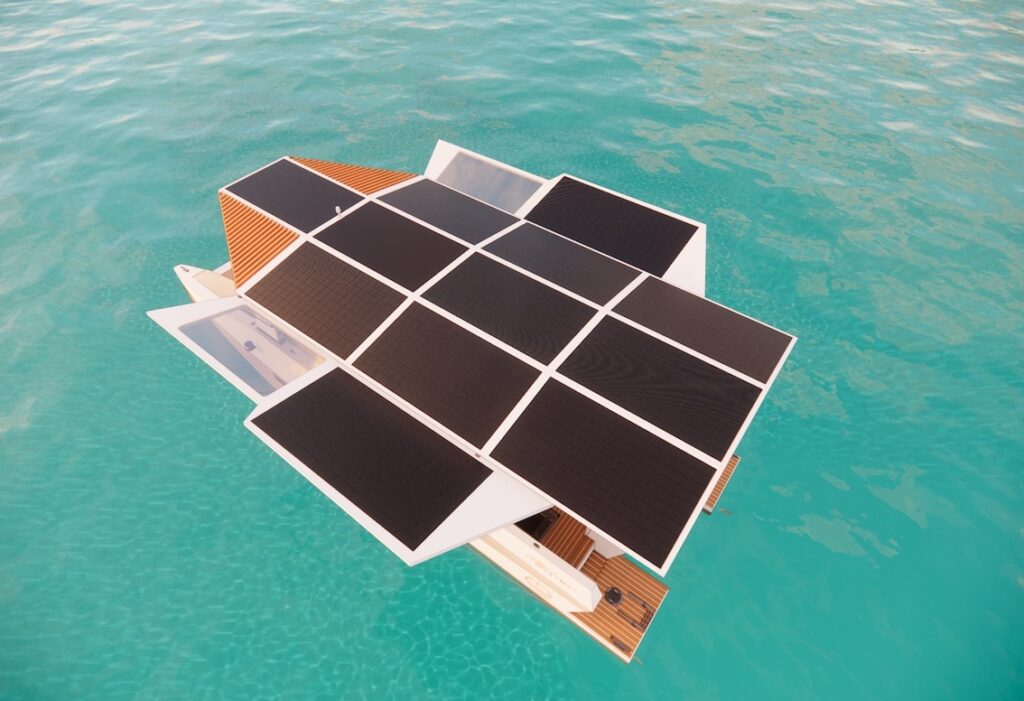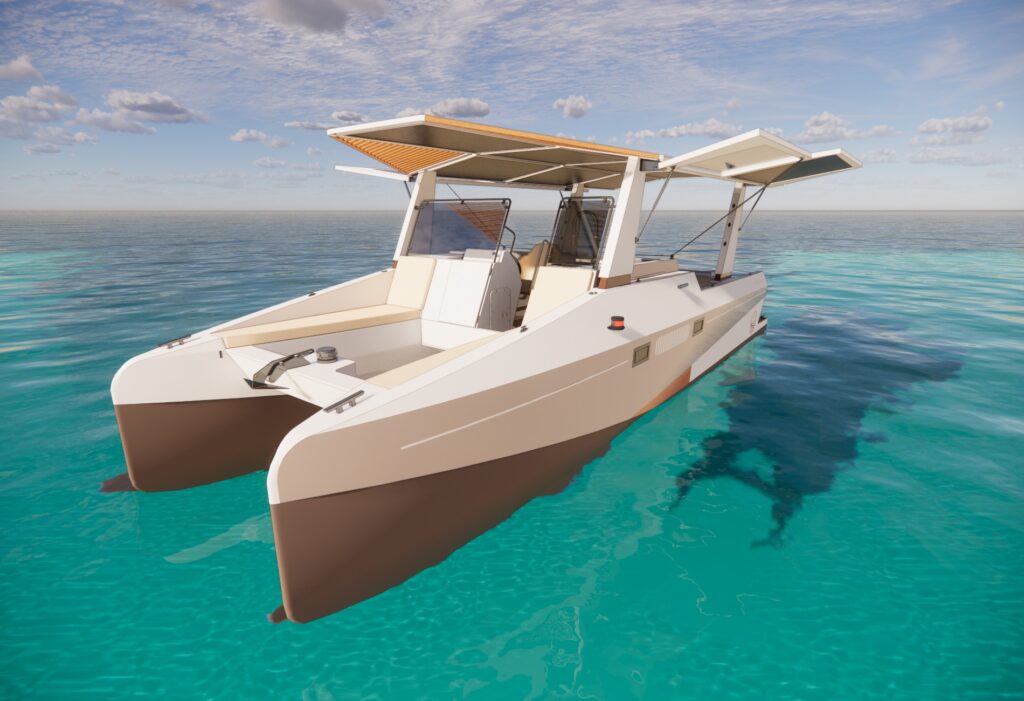
In Focus: Powered by double-sided solar panels, Millikan’s new cat to launch this autumn
Millikan Boats says its demo unit for its M9, a 9.5m long, six berth catamaran with two 50hp electric motors which is entirely powered by solar panels, will be finished this autumn (2023), and a second unit will be launched immediately after. The latter will be available for sale at trade fairs next spring.
The young French company, which describes itself as ‘innovative’ says it is using solar panels to allow the M9 to fulfil its commitment to be 100 per cent autonomous. It features an atypical shape with two wings that it deploys to capture more energy. The wings are equipped with two-sided panels, taking advantage of the sun’s reflection from the sea. The inner side provides an additional 20 per cent more electricity production and a power of more than 6kWp, which is a first for a boat of this size, as this type of production is normally provided by units of 12 to 14m, says Millikan.
“The solar system allows the boat to sail at six knots powered by the sun alone, the same speed as a sailing boat. The strength of the M9 is its batteries, which allow a cruising speed of nine knots for two to three hours and a peak speed of 12 knots,” says Adrien Samoy, who looks after Millikan’s marketing. Plus, back at the port, there is no need to plug-in the M9, as it will charge itself.
He says that the company’s experience in building cutting-edge, electro-solar boats is built primarily on the success of the Ecolo Station refit. This 7.5m electro-solar catamaran, based on the hulls of a French Cat, has been sailing the Mediterranean for nine years without ever needing to be recharged since its launch in 2015. As the owner of the Ecolo Station concept, Millikan Boats has used its seven years of experience in electro-solar navigation to imagine and develop a weekender catamaran that pushes the limits of electric navigation.

Vincent Lebailly Yacht Design drew up the plans for the M9. The company’s previous projects include the Iguana, and autonomous and motorised floating houses. The boat’s being built by Chantier de la Passagère, a historic shipyard based in St Malo.
Samoy says the engine is entrusted to BlueNav, a French company based in Arcachon, whose strength is not only to propose innovative engines, but also to have developed a whole enriched interface to exploit all the capacities of the engines. He says that the batteries, charger, inverter, monitoring and “everything else” are all handled by a simple and efficient Victron Energy package. But more than this, BlueNav has built motors for the M9 which facilitate beach operations, as well as protecting the propellers in port and at anchor.
Plus, there’s a Raymarine screen with a dedicated interface for battery management. Also accessible remotely via a mobile application, it allows the user to follow the charge level of the batteries, their condition and their temperature. Solar panel output can also be monitored through this system.
“There is a real market opportunity these days,” says Samoy. “Thermal boats are very polluting, and the cost of fuel keeps increasing. Electric boats have more and more room, they are the boats of tomorrow.”
Samoy says the French market registers 11,000 boats per year, and the maritime affairs authorities issue 60,000 boating permits each year.

In the European Mediterranean, the boating market has 30,000 boats launched each year. Within that, Samoy is looking for yachtsmen who are “looking for a non-polluting, environmentally friendly catamaran with very good performance.” He says it’ll be “an ideal boat for a weekend away, alternating between sailing, resting, and swimming.” And that it’s definitely “a French boat full of technological innovations.”
He’s hoping it’ll fill the niche for (relatively) cheaper electric cats, coming in at around €250,000.
The post In Focus: Powered by double-sided solar panels, Millikan’s new cat to launch this autumn appeared first on Marine Industry News.
